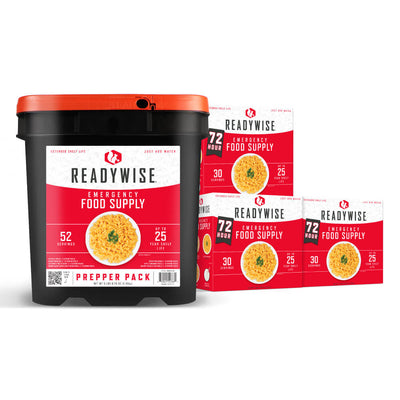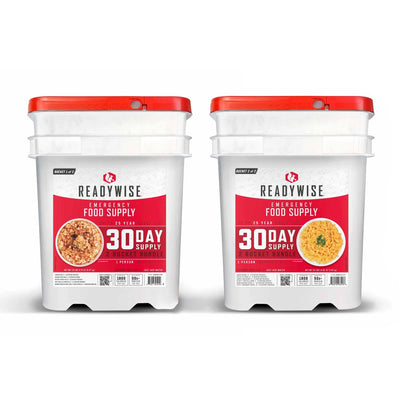5 Ways to Be Prepared for Any Situation
No one in the United States resides in an area that is entirely free of some type of emergency or natural disaster. Some emergencies, such as home fires, windstorms, and lightning strikes, can happen anywhere. Other natural disasters occur more often in certain regions of the country.
For instance, earthquakes occur more in the central and western parts of the country. Hurricanes affect people in states along the coasts, while winter storms occur in the northern regions of the United States. Volcanoes, landslides, and tsunamis are more likely to affect the west coast, Alaska, and Hawaii.
In this article, we’ll discuss preparing to survive any emergency. We’ll include a list of necessities, so you can make your own survival kit or you can purchase premade first aid kits or tactical survival kits.
1. Create a Plan
While they call it the unexpected for a reason, planning for unexpected disasters increases your survival odds exponentially. There are many things to prepare for, such as who will pick up the kids, where everyone will meet, what to do if no phones work or you don’t have transportation, and more.
Normally meeting at home would be the best idea, but there are times when this won’t work. In a natural disaster like a hurricane, family members at home may be required to evacuate the residence and, in cases such as this, you need a backup meeting spot.
Communication is difficult in many emergencies, so plan on which members of the family to contact first if something separates the family. This strategy makes the communications process efficient, especially when making phone calls may be inconvenient.
Know all of the safe evacuation routes and educate your family on them. Also, figure out ahead of time where the nearby emergency shelters are in your area. It reduces stress later on when you need to find them and you’re in the midst of an emergency.
Teach everyone in the family how to turn off utilities such as gas, electricity, and water. Some emergencies require you to turn them off, and everyone in the family who is old enough needs to know where to find all of the shut-off valves.
Planning reduces panic in emergencies that are already stressful enough. If you have a plan in place, you’ll react calmly and stay in control during disasters. Your family will feel better as well. Having a medical alert system for older family members is incredibly important too.
2. Create an Emergency Kit
Since there are many types of emergencies to prepare for, you need to generalize your kit to cover multiple emergencies. It's rare that only one emergency happens at a time. Usually, a chain of crises occurs back-to-back. Things to go in your emergency kit include:
- Non-Perishable Food
- Water
- Pet Supplies and Food
- Can Opener (Canned food will do you no good if you can’t open it.)
- First Aid Kit
- Cell Phone Chargers and Batteries
- Tactical Flashlights with Extra Batteries
- Picnic Supplies
- Sleeping Bags
- Blankets
- Hand Sanitizer and Wet Wipes
- Extra Clothing
- Extra Cash
In addition to this kit, it’s an excellent idea to stock up on the things you’ll need for regional disasters that affect your area. If you live in Southern Florida, where hurricanes and flooding occur regularly, having extra plyboard for storm preparations is crucial. If you wait until the disaster is imminent, stores may sell out of supplies when you need them.
3. Make an Emergency Kit for Your Car
Sometimes, you’re not near home when an emergency strikes. In the case of a snowstorm, you could become stranded in your car, which is certain death if you’re not prepared. Things to include in your car kit are:
- Duffle Bag or Nylon Tote
- Gloves
- First Aid Kit
- Bottled Water
- Nonperishable Food
- Manual Can Opener
- Sleeping Bags and Blankets
- Flashlight and Additional Batteries
- Small Tool Kit
- Extra Shoes and Clothes
- Matches or Lighter
- Candles
- Sealable Plastic Bags
- Wet Wipes and Hand Sanitizer
- A Compass and Local Paper Map
4. Always Stay Informed
For the safety of your family and yourself, it’s vital to know important information. Learn everything you can about the emergencies and disasters that can happen just to you and your family and the ones that affect the whole community. A medical emergency or fire affects only you and your family, typically, while a hurricane, flood, or blizzard affects everyone in your area. Knowing about these disasters helps you plan accordingly.
Learn how local authorities notify the community of disasters and how you’ll receive that information, such as on TV, the local radio, or NOAA Weather Radio channels or stations. Next, understand the difference between the various weather alerts, such as watches and warnings. Prepare your plan on how you and your family will handle each type of alert.
It's incredibly important to plan your response to disasters that occur in areas you visit frequently. If you often travel to Hawaii where there are volcanoes, and they don’t affect you in your hometown, take the time to learn how to prepare for them. Create a plan of action and understand what you need to do to protect yourself and your family.
Keep in mind that a major disaster changes your community instantly when it occurs. Remember, in your emergency plan, that emergency services may be significantly delayed in responding to emergencies.
Family members can suffer injuries, so it's critical that someone in your household learns CPR and first aid. It's better if every member of your family learns how to render first aid since there is a high probability that the one person trained in CPR or first aid will be the one who sustains injuries. Also, consider purchasing an AED (automated external defibrillator) to keep at home.
5. Make a List of Emergency Contacts
Create an emergency contact card for every member of your family. You can use an index card or another piece of paper that can be folded and put in a wallet.
On each card, write the contact information for each member of the family, such as cell, work, and school numbers. Always carry the card with you so that you can find any family member in an emergency if the phone systems still work.
It's not a matter of if an emergency or disaster will occur, it’s when one will happen. It's vital that you and your family plan for the worst. By making a plan, knowing important information about disasters, and making emergency kits, you increase your chances of getting your family through any emergency safely.
Author Bio:
Mark Hedman serves as the CEO for LA Police Gear. Mark oversees a little bit of everything, from product development to walking the dogs from our Valencia, CA headquarters. Before joining LA Police Gear, Mark was just a kid that was very interested in programming and e-commerce. Starting from the bottom, he worked his way up through all stages of the company. Mark loves animals and the outdoors. He tries to spend as much time at the range as possible or hanging out with the pups.
















































































